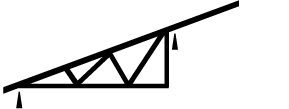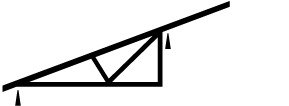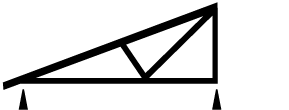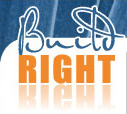The various trusses for hip roof systems

Truncated standard truss
This takes a standard truss shape but cuts off the top to suit the slope at the top of a hip end.

Truncated girder truss
This is the main truss in a hip end. It occurs below the standard truncated trusses. It takes the load of the outer hip trusses including the hip, jack and creeper trusses. It is made stronger than the standard truncated trusses to take these loads.

Hip truss
This forms the hip line of the roof. It is similar to a half truss but has an extended top chord. This extends over the truncated girder truss and finishes as the top of the hip. Some jack and all creeper trusses butt into the hip truss.

Jack truss
This runs into the hip truss. It is similar to a half truss but with an extended top chord. This extends over the truncated girder and meets the hip truss.

Creeper truss
This runs into the hip truss with no extension of the top chord. That is, it stops short of the truncated girder.

Scissor truss
There is a modified standard truss to suit a sloping ceiling. Most scissor trusses have an equal pitch ceiling each side of the apex. Other ceiling lines are also possible.

Bell truss
This is a common roof shape for Federation and homestead style houses. The top chord has two pitches. The lower pitch is usually over a verandah or patio area.

Bowstring truss
This truss is mostly used as a commercial truss, however, it is becoming more common in the domestic sector. The top chords are designed to allow a curved roof.

Cantilever truss
This can actually be any type of truss but the support point on one or both sides is located inside the span, not at the heel. An extra web is required at the inner support location(s).

Cut off truss
This can be any type of truss but does not have a heel. This truss shape is determined by the location and comparative height of the pitching lines on either side of the roof area.

Half truss
A half truss is a full truss, cut off at the apex.
